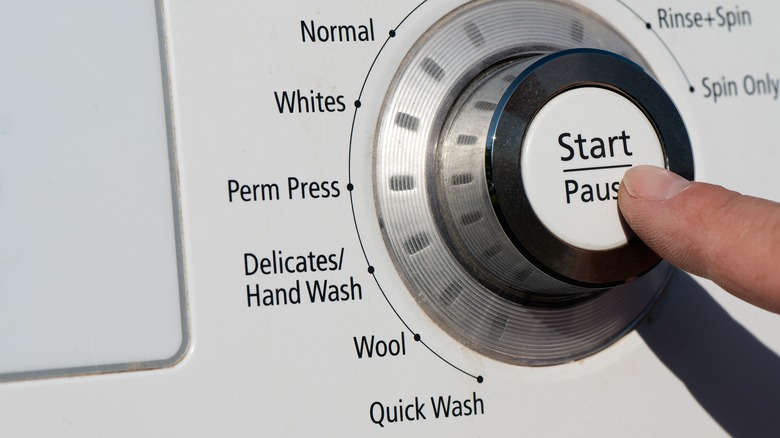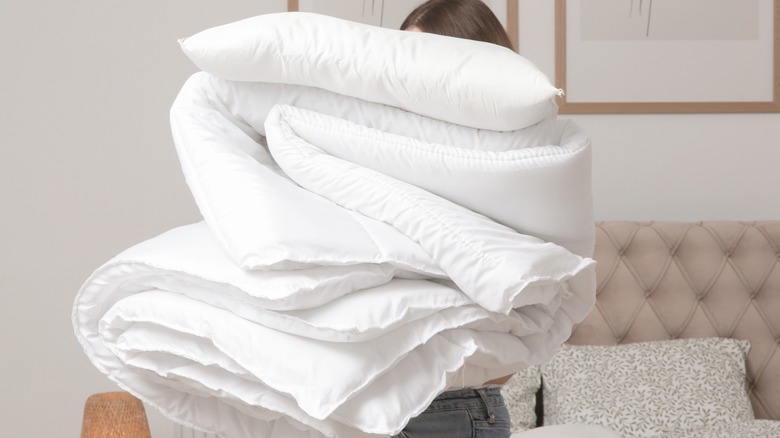Washing Machine Settings You Should Avoid When Cleaning A Comforter
When it comes to giving your bedroom the deep clean it needs, there is more to it than just vacuuming under the bed and refolding the items haphazardly thrown into the closet. You also need to strip the bed and give your linens a wash. More specifically, you need to give your comforter a wash. Since these cozy bedspreads go on top of your top sheets, not everyone realizes that you also have to wash the comforter to ensure your bedding is as fresh and clean as possible. It's a simple way to make your bedroom smell better than ever. However, these are notoriously hard to wash at home since they're so bulky and big. They often retain water, and your machine has a hard time rinsing them properly. To avoid that, stop using washing machine settings made for regular, non-bulky clothes. Instead, use a "bulky," "bedding," or "delicate" cycle.
Many people take their comforters to the laundromat to use large-capacity washers and avoid putting wear on their own units. But, you don't have to do that if you avoid these settings. That's because "bulky" or "delicate" settings typically agitate less and at a lower speed, so the cycle won't be as hard on your machine. Here is why you should avoid the other settings if you want to wash your comforter at home.
Non-specialty settings can add wear to your machine
Because of the hassle of washing a comforter, you might be tempted to skip cleaning it altogether. If you've been putting off washing it because you're worried about whether or not it's safe for your machine, exercise caution by only using specialty or gentle cycles. Be sure to avoid "everyday" cycles like "Quick Wash," "Normal Cycle," or "Whites" since these all use high spin speeds. Forcing your unit to jump into a high spin while loaded down by the weight of a wet comforter is the fastest way to put wear on it.
You also want to avoid using a high spin cycle while washing a comforter because the heavy topper can easily unbalance the load. It can get grouped or bunched up on one side, throwing the unit off-kilter. This can lead to everything from vibrating to shaking to the machine stopping entirely. However, you lower the chance of this happening if you use a setting with a lower spin cycle. In fact, most modern washers automatically lower the spin cycle if they detect an unbalanced load, so you're beating them to the chase.
Other caveats to keep in mind
If you want to protect both your machine and comforter, there are other caveats to keep in mind before throwing your bedding into the machine. First, make sure your washer has a capacity of at least 5.0 cu. ft., which is just enough space to house a comforter. Without this space, the bedding won't be properly agitated, making it difficult for the soap and water to remove the oil and dirt buildup from the fabric. To double check, either look up your capacity in your user manual or look up your brand and model online.
Second, select an extra rinse option to ensure the soap is thoroughly removed from the comforter. Since it's so large and bulky, the appliance might have a hard time properly soaking and rinsing it. Adding an extra rinse cycle ensures there won't be leftover residue clinging to the material. If there is, dirt, hair, and grime will be more attracted to it, making it dirtier faster.


